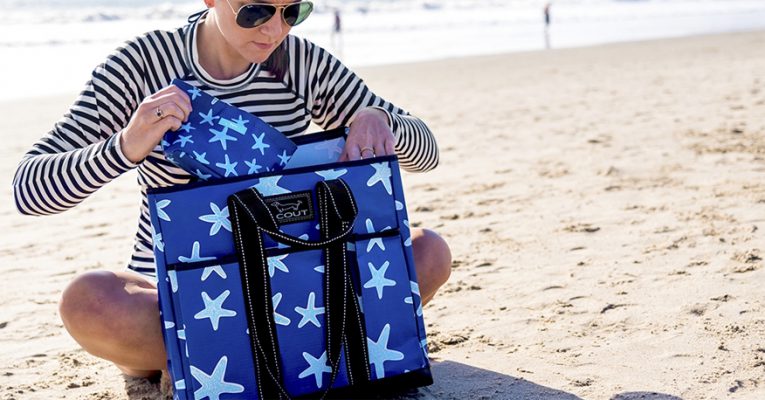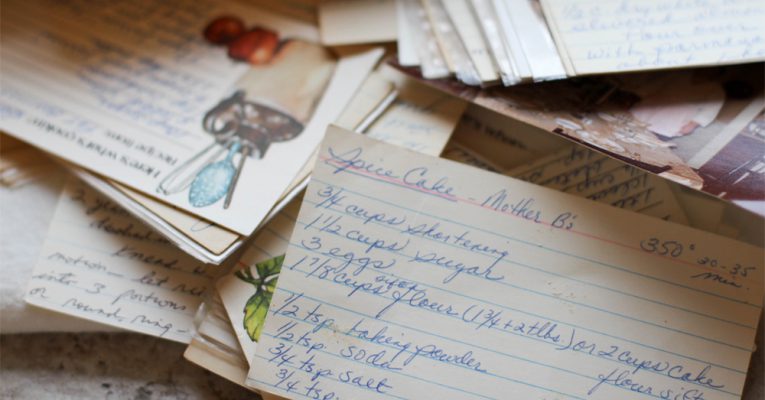
9 Quick and Easy House Cleaning Tips for Busy Moms
July 26, 2019
Guest blog by Riya Sander
If you are a mom of one, two, three, or even more kids, then you will be more than aware of the time that it takes just to make sure everybody gets through each and every day unscathed! If taking care of your children was the only domestic duty you had to worry about, there’d be no problem.
Unfortunately, there is a multitude of other duties that the majority of mothers have to contend with on a daily basis, and I think it’s fair to say that chief among them is keeping the house nice and clean. The housework schedule for working moms in particular can be really hectic, so the more tips and tricks they know, the easier their lives will be! Here are some quick and easy cleaning tips for working moms!
1. Energy Efficient Washing Machine
This should be the most important thing in your kitchen! Pick an energy efficient washing machine and it can make a huge difference to doing laundry. Whether you want to be the owner of a front loader or a top loader washer, the key advantage is that you will be graced with a much lower electric bill than you might have previously been used to. Take a look at this super helpful article if you want to understand the differences between a front loader versus a top loader and the benefits of each type.
2. Stop Folding
Did you know that you can cut your laundry doing time in half simply by not folding it once you take it out of the machine or dryer? Don’t worry, I’m not suggesting you walk around in wrinkled clothing every day! Instead, put all clothing items on hangers in their respective bedrooms and the clothes will iron themselves out thanks to the power of gravity!
3. Oven Baking Sheet
To avoid the bottom of your oven becoming the disgusting greasy mess that it tends to get after a little while, cut out a covering sheet of baking paper and place it along the lowest surface in your cooker. This paper will act as a big collecting plate for the grease and other bits that fall down as time goes by. When the time comes for cleaning, all you have to do is remove and replace the baking sheet rather than scrubbing on your hands and knees. You can also use foil, or even buy special over liners designed to do the job. They are usually washable to be reused.
4. Rubber Glove Pet Hair
If you have a cat or dog and are plagued with constant pet fur all over your furniture, then an easier way to deal with it than lint rollers is to use a pair of new rubber gloves. Pop them on, get them slightly wet and then proceed to rub your hands all over your furniture. You will see that the pet fur comes away in big clumps that you can then dispose of in a neat and tidy fashion.
5. Sweep As You Leave
Instead of letting dust and debris build up on your floors over a period of time, you should get into the habit of sweeping yourself out of a room every time you are leaving it. This is a fun little habit to pick up and ensures that your floors never have the chance to accumulate the kind of mess that can take a much longer time to clear up.
6. Invest in a Long Extension Cord
Vacuuming can take a lot of your time, and even more if you have to keep unplugging from one room to plug in another. Invest in an extra long extension cord (such as one on a reel) and you will only have to plug and unplug once. The cord will also come in handy for jobs in the garden or garage.
7. Ditch Paper Towels
Paper towels might be an instant fix to messy spills, but they pose the risk of creating their own heap of mess by filling up trash cans and coming apart in overly wet and sloppy incidents. Instead, switch to using microfiber or organic cotton towels that you don’t throw away but rather put in to your washing machine when they reach their dirt limit! This prevents your bins from filling up with paper towels, and you can also do your bit for the environment by making house cleaning more ethical and sustainable.
8. Get the Kids to Do Their Bit
If you engender good habits in your little ones they can help out as well as learning valuable lessons. As they age ensure they know to always put their toys away, keep their bedrooms tidy, and take their rubbish out. The tidier and cleaner your kids are, the easier the household chores are for you.
9. A 5-Minute Bathroom Fix
Cleaning the bathroom is everyone’s least favorite chore. Ceramic tiles are a great low-maintenance bathroom surface but they still need a little bit of love to keep them looking great. The good news is that you don’t have to waste precious time and money in order to get the smallest room in the house sparkling clean.
Everyday household items can be used to achieve a brilliant shine on any ceramic surface. A mixture of vinegar and water applied with a microfiber cloth is a fabulous non-toxic way to get your tiles, sinks, and showers spotless. For tougher stains, add some baking soda to make a paste and apply with an old toothbrush. Leave for 5 minutes and just wipe the paste away. Easy!
When you have multiple tasks to fit in every day as well as keeping a watchful eye on your children, it pays to be organised. Tidy as you go, use precious time when the kids are playing or asleep wisely, and always put things away at the end of the day. Find more cleaning tips online and incorporate them into your routine for happier, healthier days.
Subscribe to the Organize-It blog for more organization tips and tricks. Learn more at Organize-It.com

4 Ways to Pack a Perfectly Organized Beach Bag
July 22, 2019
Guest blog by Kacey Mya, the blogger behind The Drifter Collective
Getting the family to the beach is a mission in and of itself. You’ve packed the bags, filled the car and gotten everyone to your rental for the week. But that’s just the beginning.
Once you’re at the beach, you must make sure the bag you’ll carry with you has all the under-the-sun essentials you and your family will need throughout the day. As such, you have to pack it thoughtfully — not only do you want to make sure you have everything, but that you can easily locate what you need throughout the day.
So, start by laying out everything you think you might need in your beach bag. Then, pack it with our four best tips.
What Does Every Beach Bag Need?
You probably have an idea of what you want to bring to the beach with you already. But when it comes to must-haves, don’t forget the following.
- Sunscreen: The American Academy of Dermatology suggests you choose a broad-spectrum variety that protects against both UVA and UVB rays. Make sure you select a brand with a sun protection factor of at least 30. And, if you plan to jump into the sea, find a water-resistant formula.
- Towels: Once again, these are an obvious must-have. Opt for a thicker terrycloth towel to soak up water and dry you off faster.
- Protective accessories: Everyone’s beach look will be different. Whether you prefer to wear sunglasses, a sun hat, a coverup or all three, make sure you pack all the accessories you and your family need to stay comfortable under the sun.
- First-aid kit: As a parent, you must go to the beach prepared. As such, any beach packing list should always include a first-aid kit in case of the unexpected. Some will include bug spray, too, depending on the environment.
Of course, every family’s list of essentials will differ. For instance, you might want to carry along beach furniture, such as chairs or umbrellas, if you’re spending all day by the shore.
How Do I Pack It?
Now that you know what needs to fit into your bag, here are some tips for ensuring it all fits.
1. Roll Towels and Clothes
Firstly, you don’t want to fold your towels into squares and throw them in the bag. If you do, you’ll quickly run out of space for everything else you need to fit. So, fold the towels in half once vertically to create a long rectangle. Then, roll them into cylinders you can place in a corner of your bag, leaving the rest of it open for other essential items. If you bring extra clothes to the beach, do the same with them to maximize space.
2. Place Bigger Must-Haves Next
Now that you have your towels and clothes in place, you have to smartly organize the rest of your bag to fit everything else. So, round up all your larger items now. Perhaps you’ve picked up one of the summer’s best beach reads, or you’ve stocked up on magazines to browse by the beach. Slide them into the bag now, along with any children’s toys that will take up a lot of square footage. Don’t forget that if your kids want to bring buckets, shovels, etc., the bucket itself can be a beach bag — let the kids carry their buckets filled with all their other toys. This tactic will give you more space to work with inside your bag, too.
3. Then, Durable, Smaller Items
You can probably already see the pockets of space where you can slide your small-but-essential items now. Tubes of sunscreen, goggles, lip balm, reusable water bottles and more can slip in just about anywhere. And you don’t have to worry about them getting jostled around or covered in sand, so put them wherever there’s room.
4. Protect Important Pieces from the Sand and Sun
Finally, you’ll probably have your cell phone and perhaps a camera with you on the beach, as well as some cash, credit cards, headphones, etc. Some of these items are easy to lose, so you don’t want to toss them into your beach bag with no plan. In a similar vein, too much sand or sun exposure can ruin your electronics.
So, protect the final items you place in the bag. At the very least, toss your wallet into a Ziploc bag to keep it dry and dirt-free. If you plan to spend lots of time at the beach this summer, you can invest in a waterproof phone case, although the plastic bag trick would work here, too. No matter how you protect your pieces, make sure you keep them in the shade so they don’t sustain any heat-related damage, either.
Have It All
With proper planning and packing tactics, you can easily pack your beach bag and ensure you have everything within reach. So, get started — write out your must-have checklist, fold everything wisely, then slip it all into place. With that, you’re ready to go, and you’ll have everything you need for a perfect day at the beach.
Subscribe to the Organize-It blog for more organization tips and tricks. Learn more at Organize-It.com

4 Ways to Organize Your Recipes
July 15, 2019
1. Recipe Box
Is there anything more traditional than a recipe box? Store all of the recipes you’ve gathered from friends and family in one convenient place with a simple recipe box. Most recipe boxes are designed to store standard-sized 4×6 inch recipe cards or index cards. You can also use index-sized dividers to sort recipes into different categories to make them easier to find. Place a recipe box on the kitchen counter, in the pantry, or other easy-to-find location.
A recipe box is often a prized family heirloom, especially when it contains recipes written in your mother’s, grandmother’s or great grandmother’s hand.

2. Recipe Binder
Are you looking for a fancier way to organize all your favorite recipes? Use a recipe binder to store all of your collected recipes! Some recipe binders are designed to hold index cards while others hold full-page recipes, giving you plenty of storage options. You can purchase matching recipe binders and matching recipe cards to give your kitchen a simple yet cohesive design.
Don’t want to spend a lot of money? No problem! With a three-ring binder, a package of page protectors, scotch tape, and a bit of imagination, you can create your own recipe binder! Insert full page recipes into the page protectors and then place them into the three-ring binder. You can glue or tape index cards to printer paper or card-stock to display smaller recipe cards.

3. File Box
Do you have dozens upon dozens of printed recipes? Try a recipe box! Use manila folders and a standard file box to store and organize all of your printed recipes. You can easily pull the recipes out as needed and hang them on the fridge so you can refer to the recipe while you cook. File boxes aren’t just for organizing your finances anymore! This method of storing your favorite recipes gives you more space than standard recipe boxes and binders, and it allows you to easily grow your recipe collection.

4. Go Digital
With the internet at your fingertips you can find all sorts of new recipes to try, but you can also store your favorite recipes on the interweb to save on physical clutter. Websites such as BigOven, eChefs, and Mastercook Deluxe allow you to compile all your recipes into an online database.
You can also use software such as Microsoft Excel to create your own database right on the computer. This allows you to sort recipes by category, length of time to prepare, and so much more. You can periodically print out your favorite or most-used recipes and add them to your recipe binder as desired.

Tip:
Place an index card inside a Ziploc bag or a printed recipe inside a page protector to keep it free of food stains while cooking or baking.
Subscribe to the Organize-It blog for more organization tips and tricks. Learn more at Organize-It.com